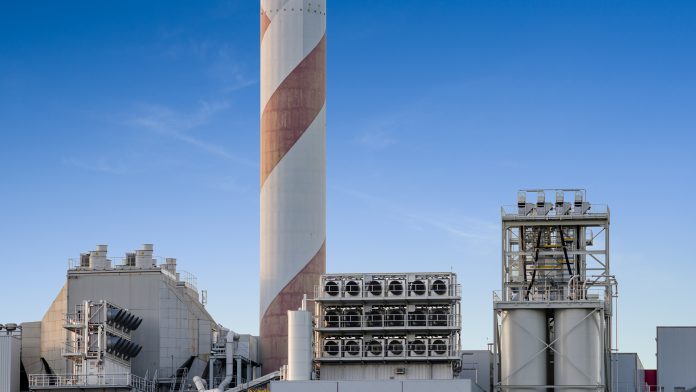Researchers have developed a method that could significantly boost the efficiency of carbon capture and conversion systems.
Carbon capture and conversion systems for carbon dioxide from power plant emissions could be important tools for curbing climate change, but most are relatively inefficient and expensive.
As published in Cell Reports Physical Science, the researchers developed a method that could significantly boost the performance of systems that use catalytic surfaces to enhance the rates of carbon-sequestering electrochemical reactions. Such catalytic systems are an attractive option for carbon capture because they can produce useful, valuable products, such as transportation fuels or chemical feedstocks. This output can help to subsidise the process, offsetting the costs of reducing greenhouse gas emissions.
In these systems, a stream of gas containing carbon dioxide passes through water to deliver carbon dioxide for the electrochemical reaction. The movement through water is gradual, which slows the rate of conversion of carbon dioxide. The new design by researchers at the Simon Fraser University and the Massachusetts Institute of Technology, USA, ensures that the carbon dioxide stream stays concentrated in the water right next to the catalyst surface. This concentration can nearly double the performance of the system.
Kripa Varanasi, who co-authored this paper, said: “Carbon dioxide sequestration is the challenge of our times. The goal of our work was to understand what’s the big bottleneck in this process, and to improve or mitigate that bottleneck.”
The researchers found that the bottleneck involves the delivery of the carbon dioxide to the catalytic surface that promotes the desired chemical transformations. In these electrochemical systems, the stream of carbon dioxide-containing gases is mixed with water, either under pressure or by bubbling it through a container outfitted with electrodes of a catalyst material such as copper. A voltage is then applied to promote chemical reactions producing carbon compounds that can be transformed into fuels or other products.
In a series of lab experiments using this setup, the rate of the carbon conversion reaction nearly doubled and was also sustained over time. The system produced high rates of ethylene, propanol, and ethanol. By concentrating the carbon dioxide next to the catalyst surface, the new system also produced two new potentially useful carbon compounds, acetone and acetate, that had not previously been detected in any such electrochemical systems at appreciable rates.







